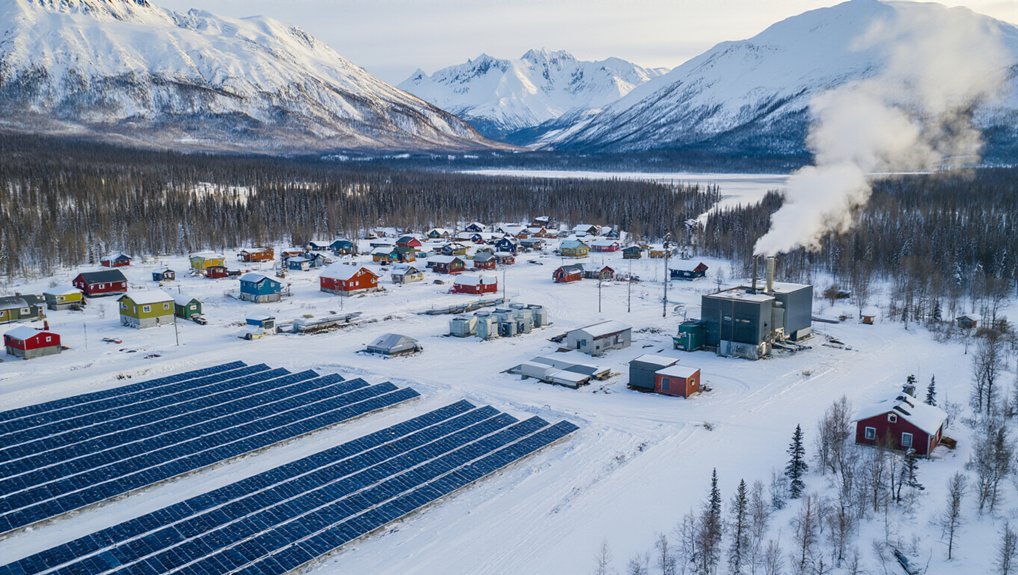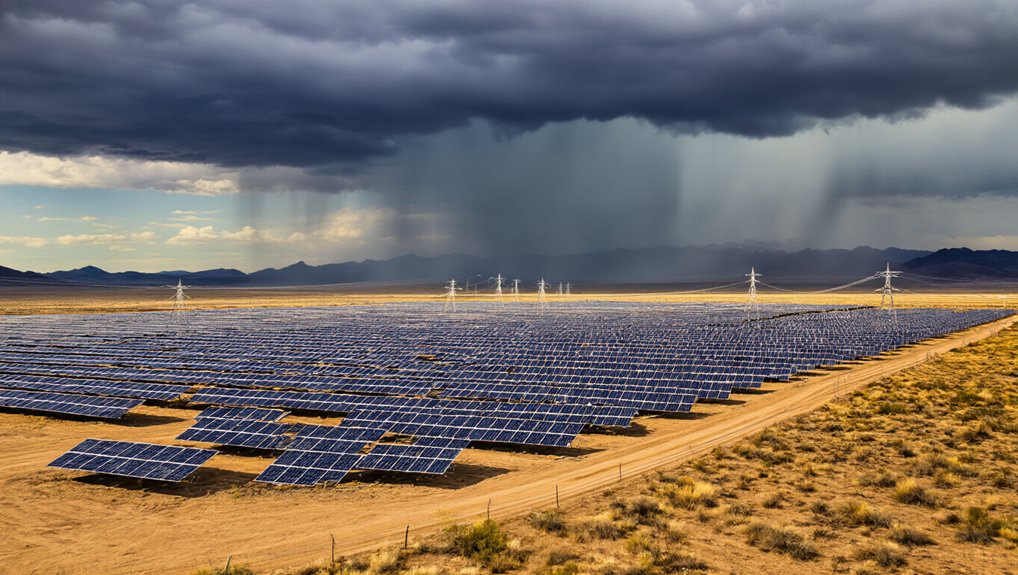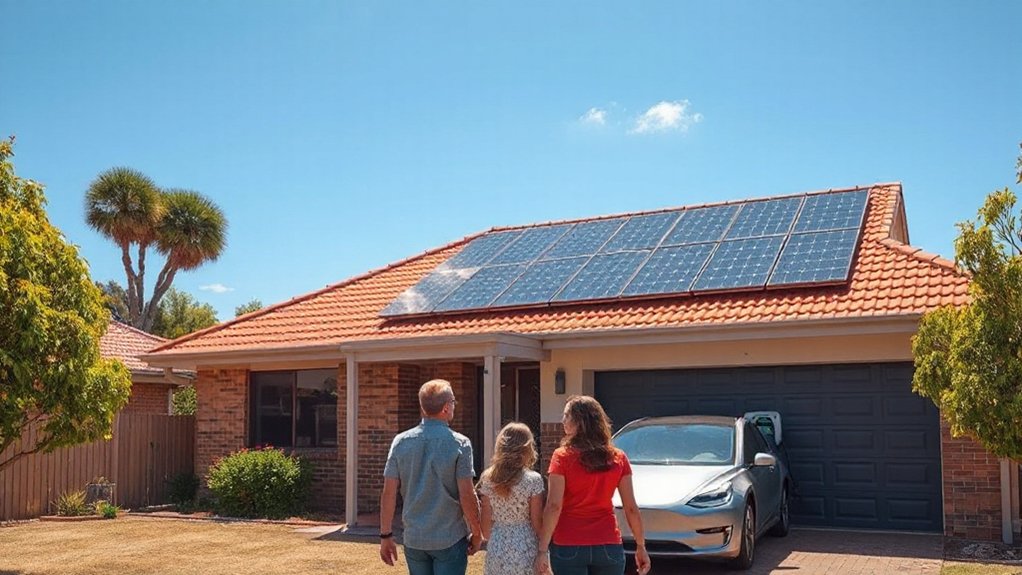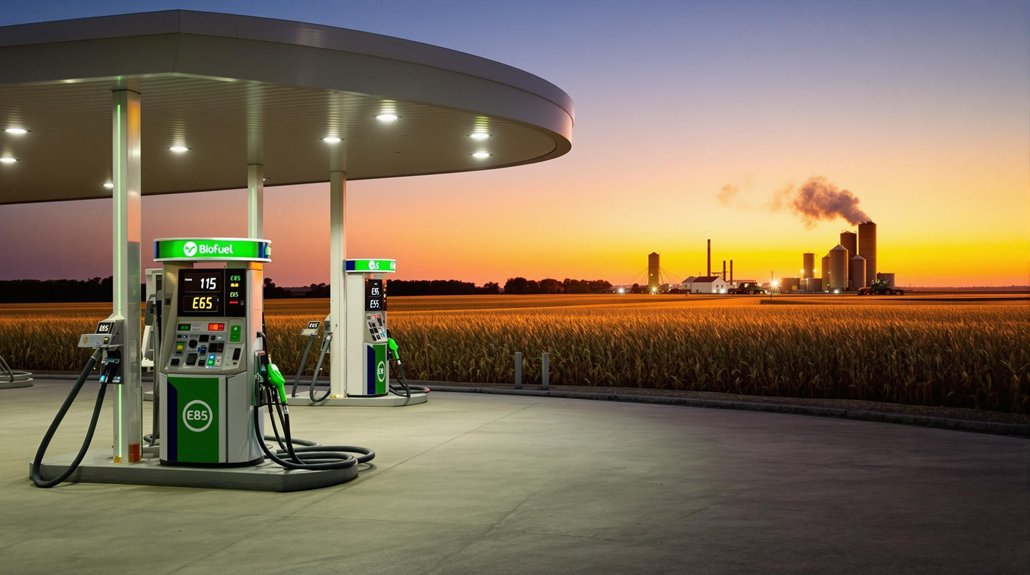The tiny Alaska village had a problem. Diesel generators kept the lights on and homes warm, but the bills were crushing them. We’re talking thousands of gallons annually, with prices that jumped around like a caffeinated rabbit. When temperatures hit minus 60°F, you can’t exactly turn off the heat to save money.
The math was brutal. High transportation costs meant diesel prices in remote Alaska made city folks’ gas complaints look cute. Every supply chain hiccup, every harsh weather event threatened to leave villages literally in the cold. Plus, diesel spills and air pollution weren’t exactly helping anyone’s health or the environment.
Remote Alaska diesel prices made city gas complaints look cute – and every supply chain hiccup threatened villages.
Something had to give. State and federal grants opened the door, and House Bill 152 – the Renewable Energy Grant Fund – kicked it wide open. Community assessments showed renewable energy could actually work in the frozen north. Who knew?
The village went big. A 1.5 megawatt solar farm sprouted up alongside an existing biomass plant. Yes, solar panels in Alaska. Stop laughing. They added battery storage because, shockingly, the sun doesn’t shine 24/7. The biomass plant burned local wood, turning what was already there into heat and jobs. The new system promised to slash oil consumption by 3,500 gallons annually. This project exemplifies how energy independence reduces reliance on imported fuels while supporting local economic growth.
Results came fast. Those diesel generators that ran constantly? Now they sit quiet for 800 to 1,000 hours yearly. That’s 100,000 gallons of diesel not burned. On sunny summer days, the village runs completely clean – 100% solar and biomass. The batteries store extra juice for nighttime. When winter darkness dominates, biomass picks up the slack.
Money stayed local instead of flying out for fuel imports. Construction crews hired residents. Technical training programs prepared locals to run the systems. The biomass operation created positions for certified professionals in mechanical, electrical, and boiler operation trades. Property tax revenues climbed thanks to expensive renewable installations. The regional government actually had money to spend on things besides diesel.
The village solved its problem. Stable energy costs replaced volatile fuel prices. Jobs replaced unemployment. Clean air replaced diesel fumes. Turns out ditching diesel wasn’t just possible – it was profitable. Sometimes the coldest places find the hottest solutions.
References
- https://abcnews.go.com/Business/wireStory/rural-alaska-village-turns-solar-biomass-energies-cut-122966692
- https://www.nature.org/content/dam/tnc/nature/en/documents/AlaskaRenewableEnergy2021.pdf
- https://www.youtube.com/watch?v=W8vdpcpLlDg
- https://www.thearcticinstitute.org/breaking-free-alaskas-path-forward-renewable-arctic-energy/
- https://alaskarenewableenergy.org/resources/library/page/2/









